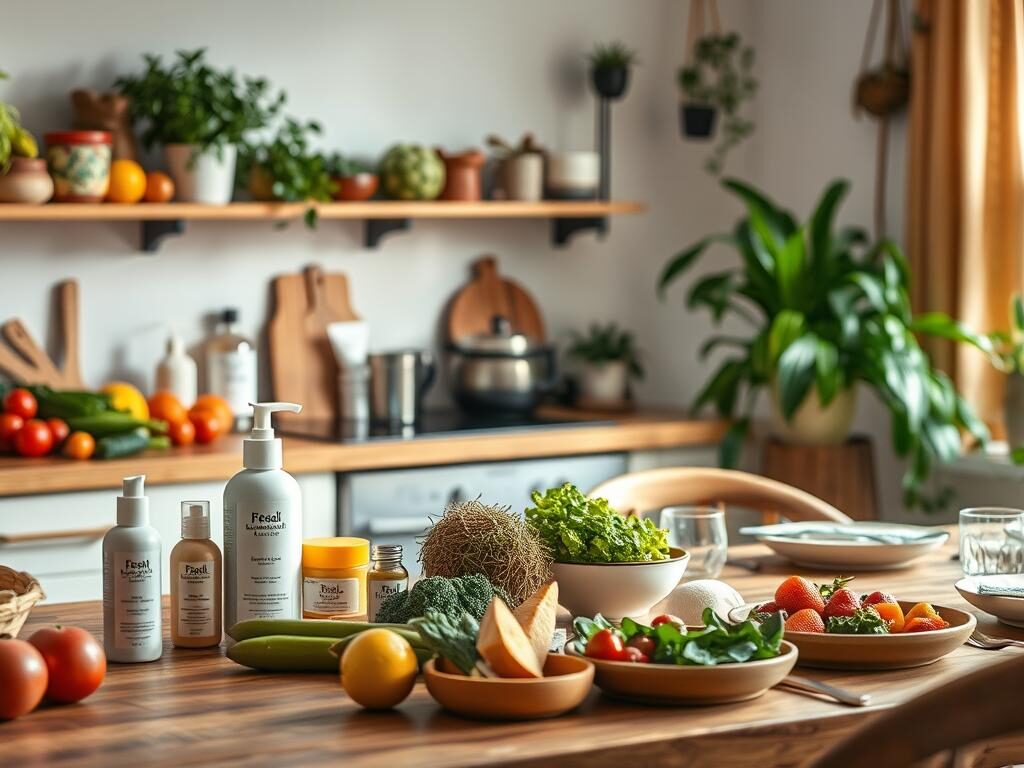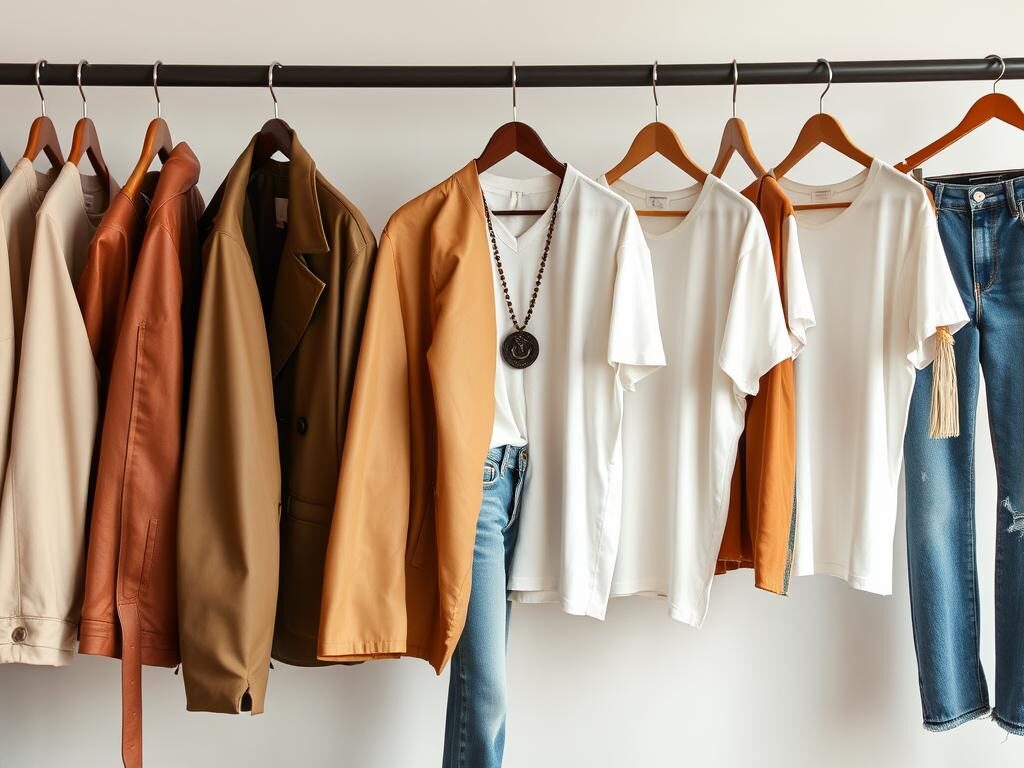Physical Address
304 North Cardinal St.
Dorchester Center, MA 02124
Physical Address
304 North Cardinal St.
Dorchester Center, MA 02124

Are you ready to make a positive change in your life and the world? Embracing a cruelty-free lifestyle is a great way to do this. This guide will show you how to make choices that are good for animals and the planet.
Starting a cruelty-free lifestyle means finding new ways to take care of yourself and the environment. You’ll learn about better beauty products and food choices. Every decision you make can help animals and the planet.
This guide will give you the tools you need to make smart choices. You’ll learn about different parts of cruelty-free living and how to use them in your daily life. Get ready for a journey that’s good for animals, your health, and the planet.
Exploring cruelty-free products can be tricky. Many think they’re choosing ethically, but there’s a lot of confusion. Let’s get clear on what cruelty-free really is and how to make smart choices.
Not all labels say “cruelty-free” the same way. Some companies use the term too loosely. This can confuse people. A product labeled “cruelty-free” means it wasn’t tested on animals. It doesn’t mean it’s free from animal products.
There are many groups that give cruelty-free certifications. The most well-known are:
Each group has its own rules for saying a product is cruelty-free. Knowing these differences helps you pick products that match your values.
Third-party checks are key to knowing if a product is really cruelty-free. These groups check everything from where ingredients come from to how products are tested. By choosing products that have been checked, you support honest and kind practices in beauty and personal care.
Starting your cruelty-free journey? Remember, knowing is important. Don’t just look at labels. Learn about a brand’s actions to make choices that are truly kind.
Choosing cruelty-free products does more than just help animals. It also makes our planet healthier. Sustainable beauty choices often go hand in hand with caring for our environment.
Cruelty-free companies often use eco-friendly packaging and ingredients. By picking these products, you support businesses that care about the planet. Many cruelty-free brands use recycled materials, offer refillable options, or have less packaging.
By choosing cruelty-free, you’re voting for a world where beauty doesn’t come at the cost of our environment.
Your choices in sustainable beauty create demand for products that respect animals and nature. Exploring cruelty-free options opens up a world of innovative, eco-conscious brands. These brands share your values and help protect our planet.
Starting a cruelty-free lifestyle is an exciting journey. It lets you live in line with your values every day. Here are some tips for shopping consciously to help you on this path.
First, check out what you’re using now. Look in your bathroom, kitchen, and closet. Find out what doesn’t fit with cruelty-free standards. This helps you know where to start.
Make a plan for switching out non-cruelty-free items. Think about your budget and what you use most. Going slow is usually better than changing everything at once.
Set goals that you can really reach. Here are some steps to think about:
Every small step towards a cruelty-free lifestyle makes a difference. Be patient with yourself and celebrate your progress along the way.
By using these shopping tips and thinking carefully about your transition, you’re on the right track. Remember, the journey is just as important as the end goal in making a positive change.
The beauty world is changing fast. More people want vegan and cruelty-free beauty products. This move towards ethical skincare and cosmetics is a big deal. It shows a desire for a kinder lifestyle.
Looking for cruelty-free beauty options? You’ll find many great choices that don’t skimp on quality. Brands are using new, plant-based ingredients. These ingredients work well and don’t hurt animals.
These brands have lots of products, from skincare to makeup. They all focus on being kind to animals. Vegan and cruelty-free products often have good stuff like aloe vera and jojoba oil. They can be just as good as other products.
Choosing cruelty-free beauty means you look better and help a kinder beauty world.
Exploring ethical skincare? Look for cruelty-free logos and check out brand practices. With more options, making a beauty routine that’s good for animals is easy and fulfilling.
Your food choices are key to living compassionately. Understanding cruelty-free food options is vital. Let’s look at how to make smart food choices.
Reading food labels is crucial for making cruelty-free choices. Look for “Certified Vegan” or “Animal-Free” on labels. Also, check ingredient lists for animal products.
Many foods have hidden animal ingredients. Be on the lookout for:
Choosing plant-based foods is a big part of ethical choices. Try these alternatives:
Plant-based foods support animal welfare and the environment.
By choosing wisely, you’re moving towards a kinder lifestyle. Every meal is a chance to live your values.
Starting a cruelty-free wardrobe is a fun step in your journey to being an ethical consumer. By picking brands that are kind to animals, you can show off your style while sticking to your values.

These materials are comfy and last long, all while keeping your values intact. Many brands now make amazing alternatives to leather, fur, and wool. This shows that fashion can be both trendy and caring.
Fashion is a form of self-expression. Let your wardrobe reflect your commitment to kindness.
When you go shopping, look for labels like PETA-Approved Vegan or Global Organic Textile Standard (GOTS). These signs show you’re making a choice that’s good for the planet and animals. Building a cruelty-free wardrobe takes time. Start by swapping out old clothes for new ones, and soon you’ll have a closet full of choices that are kind to animals.
By choosing brands that are good to animals, you’re doing more than just updating your clothes. You’re helping to make the fashion world a better place. Your choices push companies to be more animal-friendly, creating a positive change in the fashion world.
As you move towards a cruelty-free lifestyle, remember household products and cleaning supplies are key. Many cleaners have harsh chemicals and are tested on animals. Choosing non-animal testing products makes your home safer and supports ethical practices.
Choose natural cleaning alternatives for sustainable beauty. These options are kind to your home and the planet:
When buying cleaning supplies, look for brands that are cruelty-free and sustainable. Some good choices are:
By choosing cruelty-free household products, you’re cleaning your home and clearing your conscience.
Switching to ethical cleaning supplies doesn’t mean you’re giving up on effectiveness. These products clean as well as traditional ones but align with your values. They support sustainable beauty choices.
Living cruelty-free doesn’t have to cost a lot. With smart shopping tips, you can choose ethically without spending too much. Here are some ways to shop compassionately without breaking the bank.
Here are some smart ways to stretch your cruelty-free shopping budget:
Find the best places to shop for affordable cruelty-free products:
Remember, every ethical purchase, no matter how small, contributes to a more compassionate world.
By using these tips, you’ll see that choosing ethically can be both fulfilling and budget-friendly. Start with small steps, be patient, and soon your cruelty-free lifestyle will become second nature without spending too much.
Starting a cruelty-free lifestyle is rewarding but comes with challenges. As you begin this journey, you might face several hurdles. Let’s look at some common problems and how to solve them.

Finding cruelty-free products can be tough. You might struggle to find alternatives for your favorite items. Here’s how to deal with this:
Social situations can also be tricky. Friends or family might not understand your choices. Here’s how to handle these situations:
Remember, every small step towards compassionate living makes a difference. Be patient with yourself and others as you navigate this transition.
Staying true to your values while keeping relationships strong is crucial. With patience and creativity, your transition to a cruelty-free lifestyle will get easier. This will help create a more compassionate world.
Living compassionately is easier with friends who share your values. A supportive community keeps you on track with your choices. It also encourages others to follow your lead.
Connecting with people who believe in the same values can change your life. Look for local meetups, vegan festivals, or animal rights groups. These places help you find people who understand your journey.
Online groups and resources are full of helpful information. Check out:
Talking about your experiences can inspire others. Start a blog, share on social media, or just chat about your choices. Your story might encourage others to live more compassionately.
Every step towards a cruelty-free lifestyle ripples out, creating a more compassionate world.
Even a small group can make a big difference. A few dedicated people can greatly influence others. They promote living ethically and compassionately.
Starting a cruelty-free lifestyle is a big step. It takes hard work and staying focused. As you move forward, it’s important to find ways to keep going.
Learning more about animal rights and the environment is key. Read books, watch documentaries, and check out online resources. This knowledge will keep you motivated and help you make better choices.
Every compassionate choice you make contributes to a kinder world. Your consistent efforts matter.
Dealing with challenges is part of the journey. When you face obstacles, see them as chances to grow. By living in line with your values, cruelty-free living will become a big part of who you are.
Exploring cruelty-free living has shown you a path that matches your values with your daily choices. It’s more than just changing how you shop. It’s a strong statement about the world you wish to see.
By choosing ethical products, you help:
Every product you pick has an effect. Your choice to go cruelty-free in beauty, food, fashion, and home goods makes a difference. It creates positive change.
This journey is always growing and learning. As you keep going, you’ll find new ways to show kindness and inspire others. Your choices today help make a better, greener future.
Be proud of your cruelty-free lifestyle. You’re not just changing your habits. You’re making the world a better place, one choice at a time. Keep exploring, stay curious, and enjoy living in line with your values.
“Cruelty-free” means products not tested on animals. This includes the final product and its ingredients. Brands that are cruelty-free use animal-free testing methods.
Check for cruelty-free certifications like Leaping Bunny or PETA’s Beauty Without Bunnies. These groups have strict rules. You can also visit the brand’s website or contact them for more information.
No, not all vegan products are cruelty-free. Vegan products don’t have animal ingredients but might still be tested on animals. Always look for both vegan and cruelty-free labels.
Start by replacing items as they run out. Look for sales and discounts on cruelty-free products. Try drugstore brands and DIY alternatives. Many brands offer sample sizes or trial kits.
Common animal-derived ingredients include carmine, lanolin, beeswax, gelatin, collagen, and keratin. Learn about these and their plant-based alternatives to make better choices.
Yes, cruelty-free products can be just as good. Many cruelty-free brands use innovative, plant-based ingredients. The product’s effectiveness depends on its ingredients, not animal testing.
Research cruelty-free dupes online. Beauty bloggers and YouTubers often share cruelty-free alternatives. Use apps like Cruelty-Free or Bunny Free to find ethical products while shopping.
Reach out to the brand to express your concerns. Ask them to consider going cruelty-free. Your choices can influence change.
Not always. While some cruelty-free brands may cost more, many affordable options exist. Look for budget-friendly brands like e.l.f., NYX, and Pacifica. More affordable options are becoming available as demand grows.
Look for cruelty-free certifications or clear statements from brands. Method, Seventh Generation, and Mrs. Meyer’s offer cruelty-free cleaning products. You can also make your own solutions with vinegar, baking soda, and essential oils.Cruelty-Free Lifestyle